In August of last year, I embarked on an unforgettable journey into the heart of the Arctic, traversing the vibrant urban landscape of Mumbai to the tranquil shores of Oslo, Norway. From there, my adventure began as I ventured onward to Longyearbyen, the gateway to the ethereal Arctic Archipelago of Svalbard.

The stunning view of Oslo’s Opera House in August
Upon landing in Oslo, I found myself enveloped in a city where modernity intertwines seamlessly with a rich tapestry of cultural heritage. Oslo, with its vibrant museums and serene fjords, served as the perfect prelude to my Arctic escapade.

Stone sculptures dot the grassy knolls of Vigeland Park
The transition to Longyearbyen was a stark contrast—a quaint, one-street Arctic town nestled amidst breath-taking icy vistas, situated at the remarkable latitude of 78 degrees North, marking it as the northernmost town on Earth. Here, amidst the permafrost, lies the global seed vault, safeguarding a myriad of seed samples from across the globe. The absence of soil on Svalbard is compensated by the vitality of life sustained through the natural cycle of bird and animal droppings. Longyearbyen, with its unique charm, became the starting point of our ten-day expedition aboard the M/s. Sjoverien.

The Quaint Church in Longyearben

Little Chapel
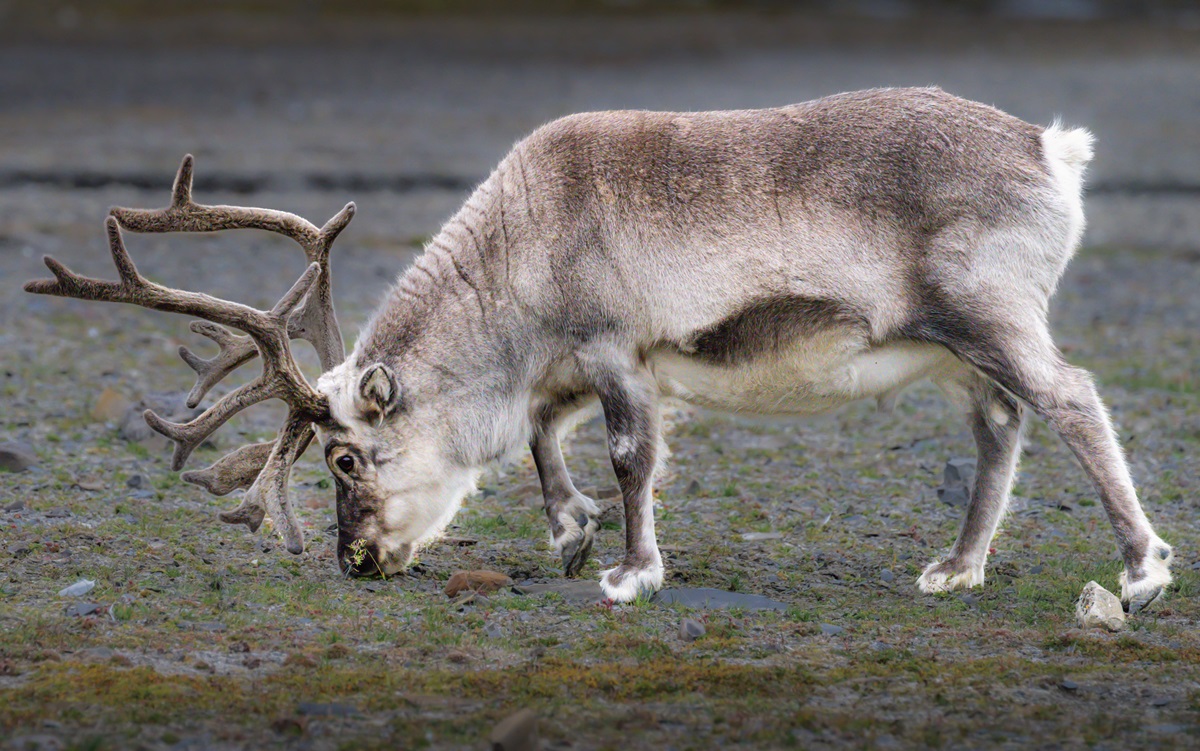
My first sight of the Svalbard Reindeer through the window of my hotel
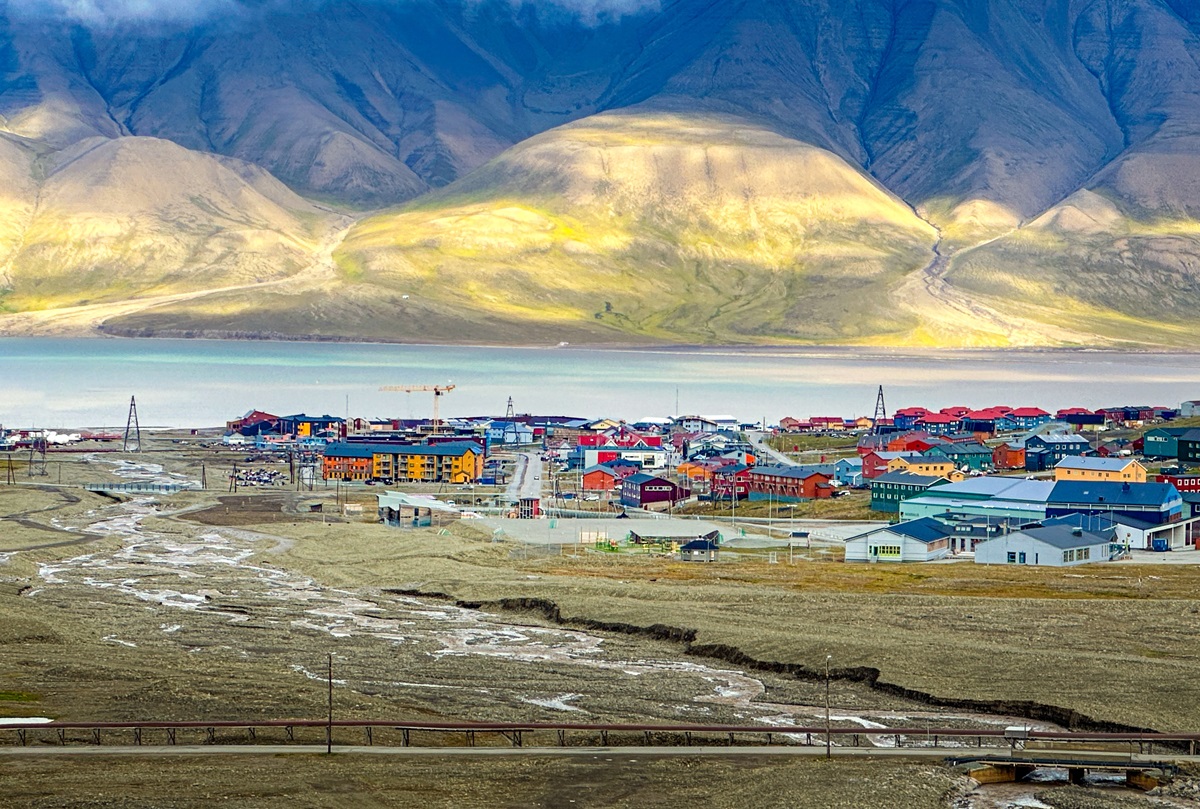
Town of the Longyearben

View from a top a small hill in Longyearben
As our ship set sail, we were greeted by the phenomenon of the Midnight Sun, where daylight persisted ceaselessly, casting an ethereal glow upon the icy expanse. After settling into our cozy cabins, we gathered for a talk, where the details of our 10-day voyage were unveiled, painting a vivid picture of the adventures that awaited us.

Our ship – M/s. Sjoverien

ROUTE, Svalbard Expedition
Our first port of call was Ny-Alesund, a scientific research settlement nestled at 79 degrees North, the highest inhabited place on the planet.

The Northernmost Post Office in the World – Alesund
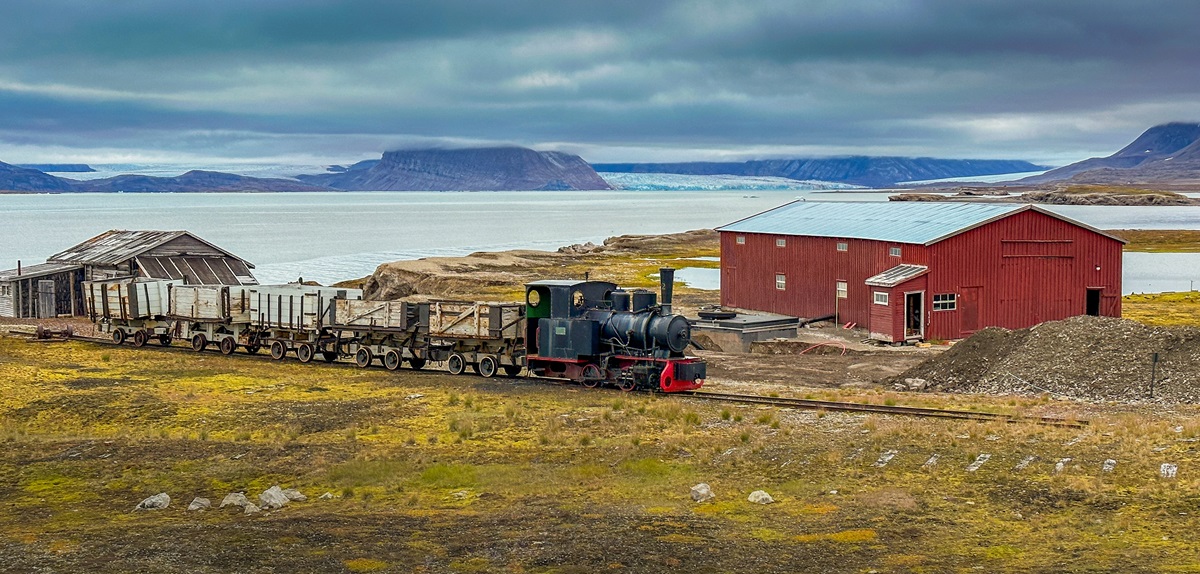
The train at Alesund
Here, amid the serenity of the Arctic, we encountered the researchers of the Indian Research Centre, “Himadri,” and shared with them a taste of home—a box of homemade “boondi ke laddoos”.
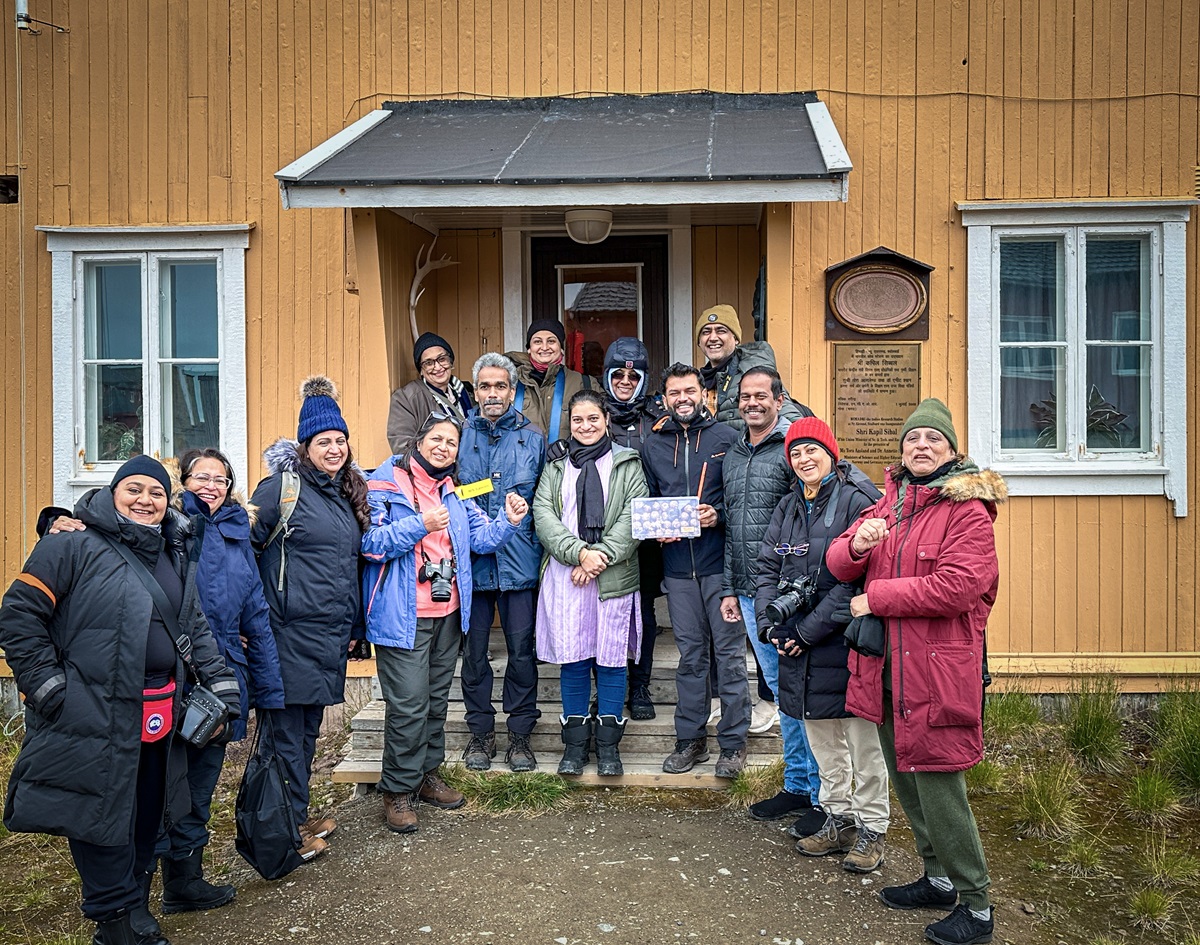
Photograph with our Indian Scientists outside Himadri
Our exploration continued as we stumbled upon historical landmarks, such as the mast from which the legendary polar explorer Roald Amundsen set forth on his quest to conquer the North Pole.

The mast at Alesund
During our walk back to the harbour, two little Arctic Fox pups added some excitement in our group since this was our first encounter with the Arctic wildlife. The Arctic fox, a marvel of nature, never fails to inspire awe with its remarkable adaptations and resilience in the face of harsh Arctic conditions.

Arctic Fox
In the winter months, the Arctic fox’s fur undergoes a miraculous transformation, turning into a pristine, snow-white coat that seamlessly blends with the frosty landscape. This natural camouflage helps the foxes evade predators and hunt for prey amidst the snowy terrain. However, as the seasons shift and summer arrives, the fox’s coat gradually takes on a subtle greyish hue, allowing it to blend in with the rocky tundra and sparse vegetation of the Arctic landscape. This ability to adapt its appearance to its surroundings showcases nature’s ingenious design, enabling the Arctic fox to thrive in one of the world’s harshest environments.
The encounter with the Arctic fox pups served as a poignant reminder of the resilience and beauty of the natural world, inspiring us to cherish and protect these magnificent creatures and their fragile habitat.
As we journeyed onward, our eyes were treated to the sight of a mother polar bear and her adorable cub making their way up the hillside. Respecting their space, we continued on our path, leaving the bears to their exploration of the Arctic landscape.

Our first sight of a mother and a baby Polar Bears
Our next destination was Smeerenburg, a historic site that bears the remnants of the whaling era from over 400 years ago. As we explored further, our attention was drawn to a nearby walrus colony, where these magnificent creatures lounged upon the sandy shores, unperturbed by our presence. With their distinctive tusks and ample blubber, the walruses exuded an air of tranquillity as they basked in the Arctic sunshine, occasionally emitting hearty barks and grunts as they communicated with one another.

Colony of Walrus

Walrus
Seated among these horrific farting giants, we were privileged to witness a slice of Arctic life unfolding before our eyes. From their leisurely activities on the beach to their vocal interactions with fellow walruses, each moment spent in the company of these remarkable creatures offered a glimpse into the rhythms of life in the Arctic wilderness.
As night fell upon us, we gathered on deck, a sense of exhilaration coursing through our veins as we raised our glasses in a toast to our accomplishment. We had reached a significant milestone on our Arctic expedition—we had crossed the elusive 80 degrees NORTH, the closest point one can venture to the North Pole without setting foot upon its icy expanse.

Arctic Expedition – 80 degree North

Toasting 80 degree North
In that moment, as we stood on the threshold of the top of the world, we toasted to our journey and the wonders we had encountered along the way. We knew that our adventure was far from over. There were still many mysteries to unravel, many sights to behold, and many memories yet to be made in this magical corner of the Earth. And so, with hearts full of gratitude and anticipation, we raised our glasses to the Arctic, to the North Pole, and to the boundless possibilities that lay ahead.
The remarkable Monaco and Seliger Glaciers beauty left an indelible mark on our Arctic journey. These glaciers, with their sheer grandeur and breath-taking vistas, stand as prime examples of the majesty of the polar landscape.
Spanning nearly 5 kilometres combined, the fronts of the Monaco and Seliger Glaciers present a sight to behold. Their towering ice cliffs, adorned with delicate blue hues and glistening in the Arctic sunlight, evoke a sense of wonder and awe.
Cutting through the ice floes at the Monaco and Seliger Glaciers
 Monaco and Seliger Glaciers
Monaco and Seliger Glaciers
As we navigated our zodiacs toward the glacier, we carefully ploughed through the ice floes. Approaching these icy behemoths, the air was filled with a constant rumble – a symphony of calving icebergs breaking away from the glacier’s edge and crashing into the frigid waters below.

 Iceburg at the Monaco and Seliger Glaciers
Iceburg at the Monaco and Seliger Glaciers

Monaco and Seliger Glacier – Beauty of a multidirectional iceburg
Amidst this frozen spectacle, we were greeted by the sight of kittiwakes perched gracefully upon the floating icebergs, their elegant forms contrasting against the pristine white of the glacier. These seabirds, with their distinctive cries and graceful movements, added an element of serenity to the dramatic landscape.

Kittiwakes against a blue iceberg nature’s serene ballet amidst frozen giants.
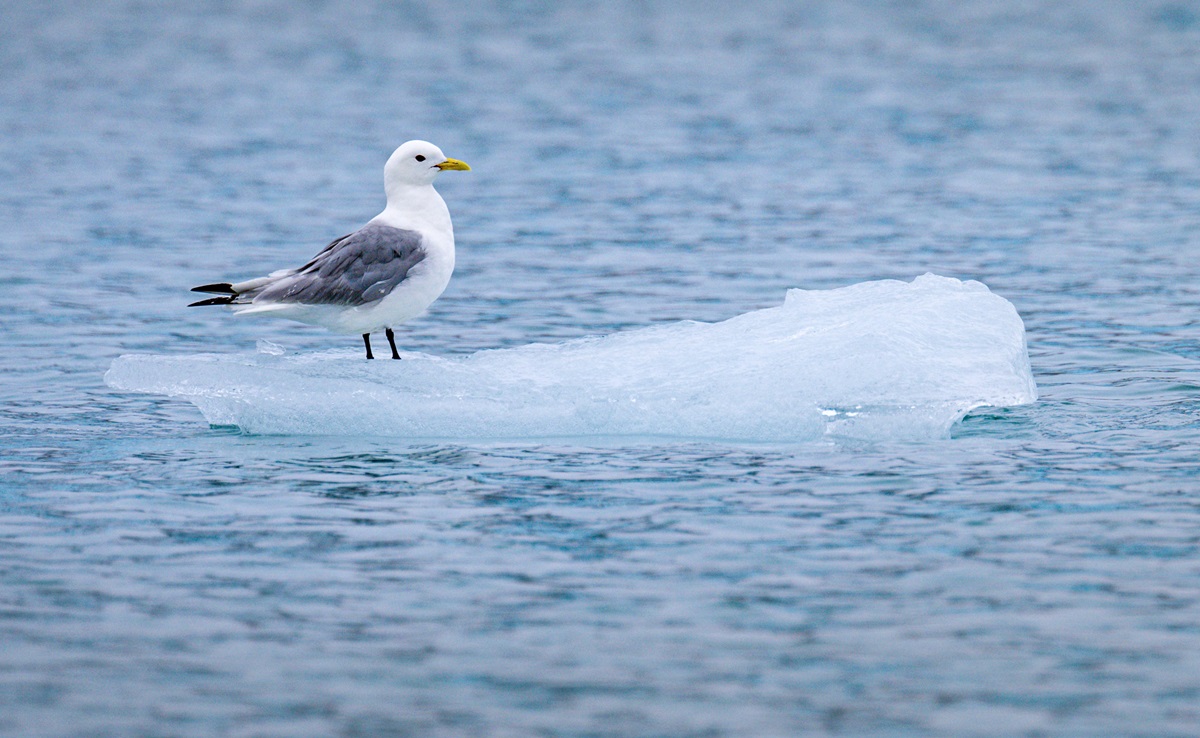
Kittiwakes floating by on an icebergs
Surrounded by the sights and sounds of the polar wilderness, we were reminded of the profound beauty and fragility of this remote corner of the world. These glaciers, with their timeless presence and ever-changing forms, serve as proof to the enduring power of nature and the importance of preserving our planet’s precious ecosystems for generations to come.
Our expedition eventually brought us to the awe-inspiring Brasvellbreen Glacier, a colossus of ice boasting an expansive ice cap and a glacier front extending an astonishing 160 kilometres. Renowned for its magnificent waterfalls, this glacier is a testament to the grandeur of the Arctic landscape.
Upon our arrival, however, our view of the glacier was obscured by a dense fog, covering the splendour that lay beyond. Yet, as if by some stroke of magic, the fog began to dissipate mere minutes after our arrival, unveiling a breathtaking scene bathed in golden light. With the mist lifting, we were greeted by the sight of cascading waterfalls, their thunderous roar echoing through the crisp Arctic air.
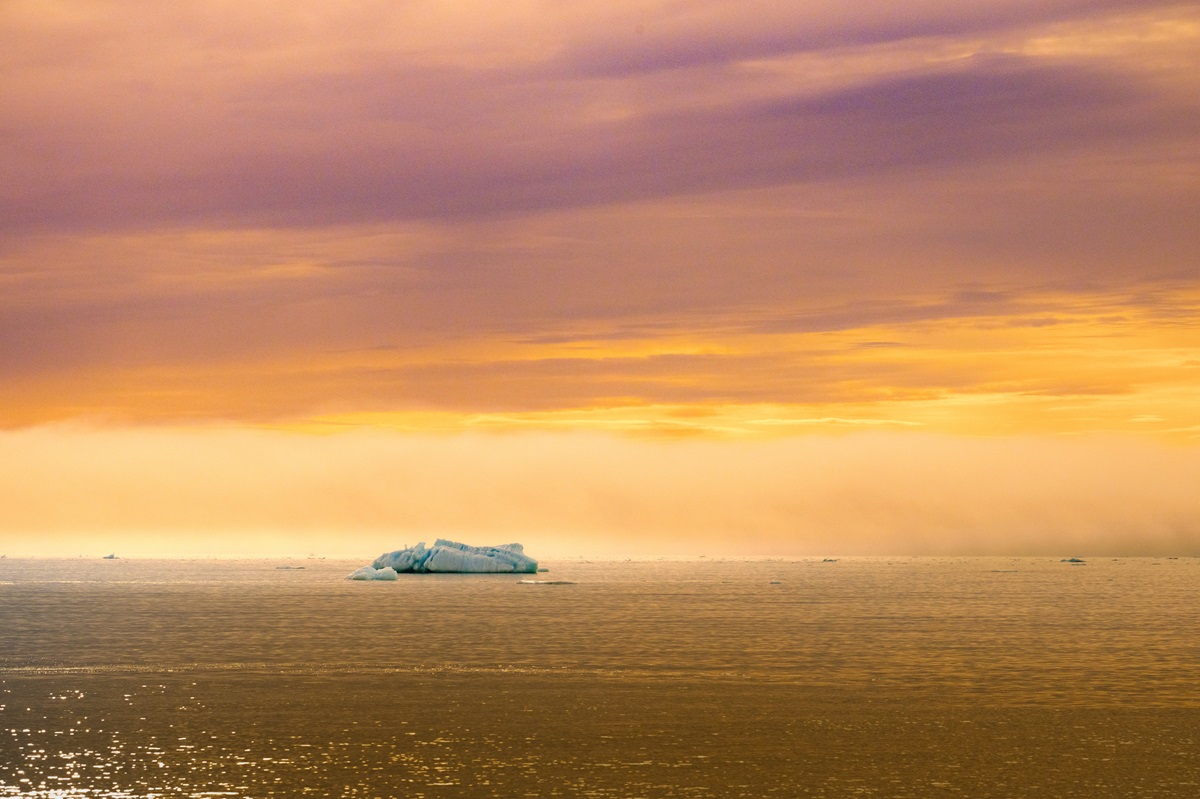

Brasvellbreen Glacier Aglow in Golden Sunlight
Bråsvellbreen

Waterfalls at the Brasvellbreen gracier

Under the expert guidance of Captain Roger, our vessel navigated along the glacier front for hours, affording us the opportunity to marvel at the sheer majesty of the waterfalls and the surrounding landscape. Each cascade, some with such force that they seemed to shake the very earth beneath us, captivated my senses and left an indelible impression upon my soul. As I gazed upon this natural wonder, I was deeply moved by the beauty and power of the Arctic wilderness. I believe it is a place where the forces of nature reign supreme and this thought left me in complete awe.
Brasvelbreen
If the weather remained favourable, our next destination beckoned from a distance of 354 kilometres: Kvitoya, an island known for its rugged beauty and rich wildlife. The journey from the Svalbard Archipelago is often fraught with rough seas and challenging conditions. However, fortune smiled upon us as we experienced smooth sailing throughout the entirety of our voyage, both to the island and back again.
Kvitoya, is situated at approximately 80 degrees North and a mere 870 kilometres from the geographic North Pole. But Kvitoya’s allure extends beyond its charismatic megafauna. The island is surrounded by a rich tapestry of marine biodiversity, with whale species making regular migrations through the Arctic waters that lap at its shores.
The morning greeted us with a brilliant display of sunshine so intense that it momentarily blinded our sight, making it challenging to scout the shoreline as planned. Our original intention was to make a landing at Andrée Neset, yet mindful of the potential danger of polar bears, we opted for a zodiac cruise instead. It turned out to be a wise decision, for as soon as we reached the shore, our keen eyes spotted a polar bear reclining lazily on the beach. To our amazement, further exploration revealed not just one, but a total of two of these magnificent creatures dotting the landscape.

Polar Bear – Reclining on the Beach
As we made our way back, a mesmerizing scene greeted us one evening. Two towering blows against the horizon caught our attention, sparking our curiosity. Intrigued, we drew closer and discovered the elegant shapes of two humpback whales. Illuminated by the gentle light of the midnight sun, their tails glimmered with a golden hue, presenting a sight of unparalleled beauty.

Glimmering tales of the whale: Elephant-like silhouettes of two humpback whales in motion

Amidst the calm undulations of the sea, we caught sight of the unmistakable blows of finn whales, their majestic presence marked by wisps of mist rising into the Arctic air.
Despite the dense fog that shrouded the morning, we courageously set out in our zodiacs, determined to explore and encounter the Arctic wildlife. To our sheer amazement, we stumbled upon three polar bears swimming and playing together in the frigid waters.

Polar Bear swimming and playing
To see them emerging from the sea to feast on a whale carcass was very exciting—it was truly a magical experience. We relished every moment spent observing their behaviour, cherishing the unique opportunity for hours on end. The polar bears displayed an unexpected calmness and relaxation in our presence, even approaching us on a couple of occasions. These were truly once-in-a-lifetime moments that etched unforgettable memories into our hearts and minds.
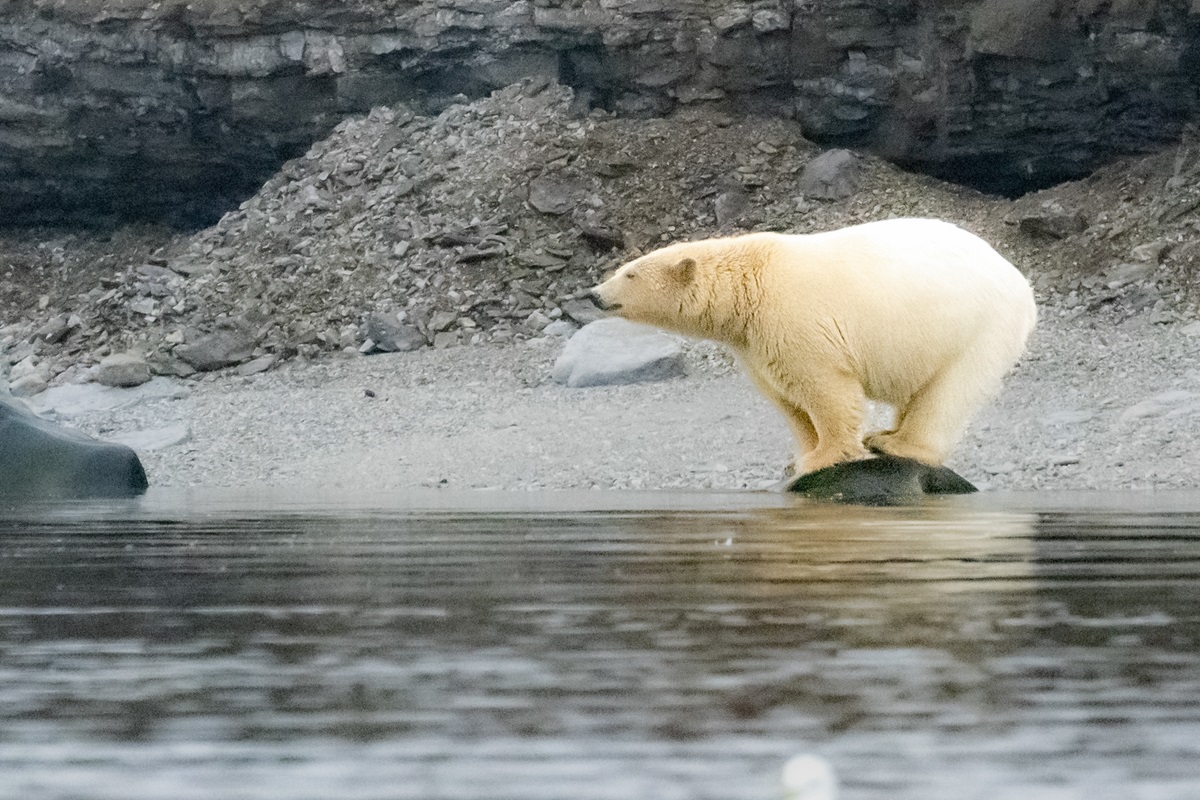
Polar Bear

Polar Bear Eating whale carcass
On our way back, we made a stop at Cap Waldburg which is renowned for its bustling polar bear activity and a cliff teeming with nesting kittiwakes. A brief hike up the terrain led us straight to the heart of the action.

Cliff of nesting Kittiwakes
Kittiwakes
Upon setting foot on shore, we were greeted by our first encounter with wildlife: a curious fox pup, approximately two years old, darted down from the hills to investigate us. Fearless and undeterred by our presence, it proceeded to inspect our belongings with keen interest as we watched in silent fascination. From nibbling on our anchor rope to playfully interacting with a life vest, this spirited pup showed a fondness for my sun hat, nearly demolishing it in the process. Its playful antics culminated in leaving a surprise atop my hat. Since leaving items on the island was not an option, we had to retrieve our belongings, but I decided to leave the hat on the ship as a cherished memento of our unforgettable encounter with the Arctic wildlife.

Fox approaching

Attack on my sun hat and run…

Achieved its goal
Yet, the afternoon held a special surprise for us at Cap Lee: the appearance of a rare phenomenon known as a fog bow. This ethereal spectacle, akin to a rainbow, materialized amidst the ever-shifting fog, bestowing upon the landscape an enchanting aura of serenity and intrigue.

Fog bow
Amidst the peaceful surroundings, punctuated only by the occasional barks and grunts of our two-ton companions lounging on the beach (the walruses), I found myself once more immersed in a tapestry of majestic beauty of the Arctic wilderness.
Walrus
I was utterly fascinated by the breath-taking Arctic and the delicate harmony of its ecosystems, serving as a stark reminder of the urgent need to combat climate change and preserve God’s creation. Despite the formidable challenges, I found solace in nature’s resilience and in humanity’s potential for innovation and compassion.
In the tranquil expanse of the Arctic wilderness, enveloped by glistening glaciers and vast expanses of ice, I was overcome with a profound sense of peace and enlightenment – a testament to the sanctity of life and the interconnectedness of all living beings. By cherishing and safeguarding every aspect of this extraordinary environment, we honour the richness of nature’s creation and embrace our responsibility as stewards of this remarkable legacy.
In the face of the daunting realities of climate change, let us redouble our efforts to preserve this precious landscape, dedicated to ensuring its beauty and diversity for the enduring benefit of future generations.








